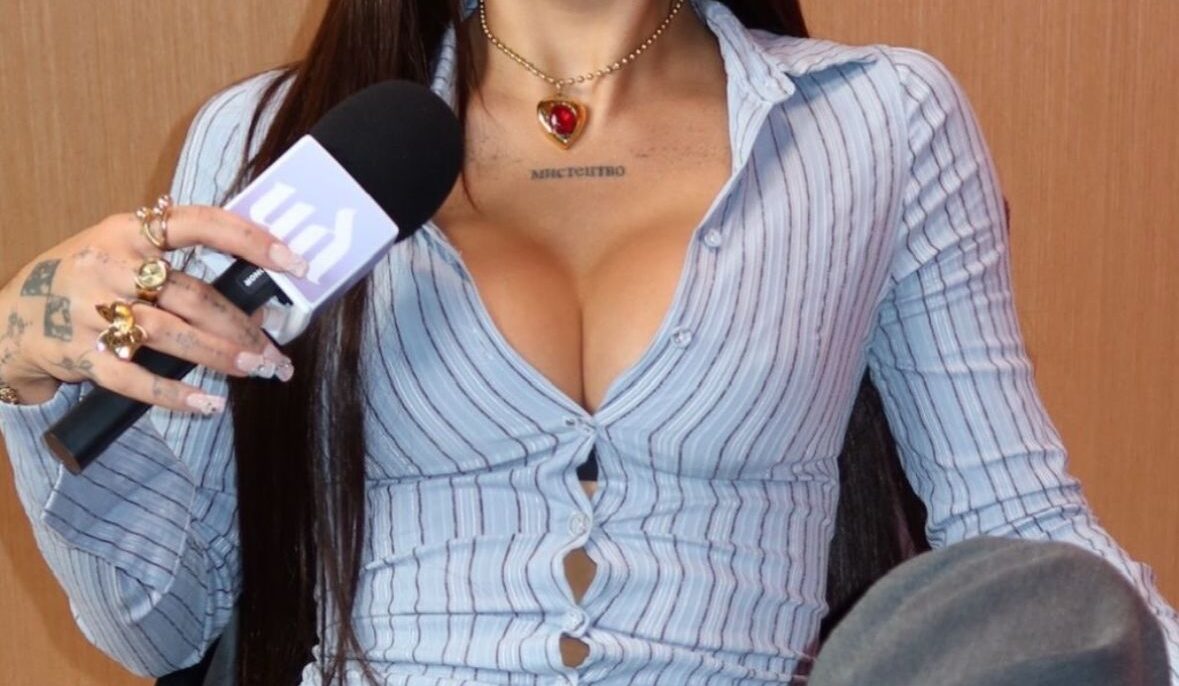It’s About Time Beauty Brands Recognize the Influence of OnlyFans Stars
It’s rare that an influencer collaboration genuinely captures my attention, but Urban Decay, please accept my applause. Their choice of Ari Kytsya as an influencer partner isn’t just noteworthy; it’s a profound statement on the evolving landscape of beauty marketing. As someone who has previously worked on the Urban Decay brand and dedicated my thesis to understanding MAC Cosmetics‘ unique, non-traditional marketing approach that built a preferred brand without conventional advertising, I recognize a pivotal moment when I see one.
Makeup has always been a powerful tool for self-expression, a canvas for individuality. Yet, in recent years, a certain uniformity has crept into beauty content. The “clean girl aesthetic,” while appealing to some, risked pushing the industry towards a monotonous blandness. Urban Decay, however, stepped in to disrupt this trend, demonstrating a willingness to be bold and challenge the status quo by partnering with someone like Ari Kytsya.



A Provocative Choice: Disruption Personified
Some in the industry might have labeled Urban Decay’s selection of Ari Kytsya as a provocative move, one that could invite negative commentary. From my vantage point as an industry professional, I see it as profoundly disruptive and undeniably breakthrough. This campaign isn’t about promoting flawless finishes or adhering to safe, predictable beauty norms. It’s about owning a bold stance, rejecting blandness, and showing up unapologetically – a true reflection of makeup’s original spirit.
Urban Decay actively sought out an influencer who doesn’t conform to the traditional beauty mold. Ari Kytsya is provocative, raw, and authentically unfiltered. She doesn’t just apply makeup; she inhabits it, crafting her own narrative. Crucially, she commands an exceptionally engaged audience that listens intently to her every word.
Was the partnership controversial? Yes. Did it spark widespread conversation across social media and industry forums? Absolutely. Did it cut through the immense clutter of beauty content vying for attention? Without a doubt.
In an industry saturated with countless beauty influencers, Urban Decay made a deliberate choice to work with an OnlyFans creator. And the returns have been clear: enhanced reach, undeniable relevance, and a tangible connection with a diverse audience hungry for authenticity. This campaign underscores a critical truth: influence isn’t merely about accumulated eyeballs; it’s fundamentally about fostering genuine community.
The “Blandemic” and the New Frontier of Authenticity
Urban Decay’s concept of a “Blandemic” perfectly encapsulates the industry’s recent malaise. It’s a clever, self-aware critique of how makeup has, for some, become less about creativity and more about conformity. Their partnership with Ari Kytsya wasn’t just a marketing stunt; it was a strategic declaration, an explicit effort to inject fun and individuality back into beauty.
The impact has been considerable. Several videos from the campaign garnered millions of views, with one reaching over 2.5 million and another exceeding 1.7 million. This level of engagement significantly outpaces many traditional campaigns. The campaign’s tongue-in-cheek tone hit its mark, perfectly positioning the Urban Decay brand in the public eye while seamlessly aligning with Ari’s established personal brand. The entire concept – from casting to creative execution – was exemplary.
For Ari herself, this partnership represents a significant validation. She has always been transparent about her profession as an OnlyFans creator and openly discussed how it impacted her opportunities for mainstream brand deals. Urban Decay not only accepted her personal brand but enthusiastically embraced it. This collaboration serves as a powerful testament to the idea that staying authentic and holding true to one’s identity pays off. You don’t need to appeal to everyone; the right opportunities will invariably come knocking.
This “Anti-Bland” campaign stands out as a masterclass in influencer partnership, particularly when many brands would struggle to get such a concept approved internally. It effortlessly achieved the provocative and edgy vibe that many makeup brands aspire to but often fail to capture.
Why OnlyFans Stars? The Power of Unfiltered Connection
The question many industry professionals might ask is, “Why OnlyFans stars, specifically?” The answer lies in the unique relationship creators on platforms like OnlyFans cultivate with their audiences. Unlike the often-curated and brand-managed content prevalent on mainstream platforms, OnlyFans fosters an environment of raw, unfiltered connection. Creators on these platforms build communities based on deep personal engagement, often sharing aspects of their lives and personalities that are rarely seen elsewhere.
This intimacy translates into an unparalleled level of trust and loyalty. When an OnlyFans creator endorses a product, it resonates not just as a recommendation, but as a genuine suggestion from someone with whom their audience feels a personal bond. In North America, the creator economy is booming, with platforms like OnlyFans hosting a substantial number of creators who have amassed dedicated followings. While exact figures for North American OnlyFans creators can fluctuate, industry estimates suggest millions globally, with a significant proportion residing in the U.S. and Canada. These creators, especially the top earners, demonstrate immense earning potential, reflecting the direct financial support and intense loyalty of their fan bases.
This deep engagement contrasts sharply with the often-superficial interactions seen on traditional social media, where metrics like follower count don’t always translate to genuine influence. For beauty brands seeking to cut through the noise, tapping into these highly engaged, niche communities offers a strategic advantage. It moves beyond chasing simple impressions and instead focuses on fostering authentic conversations that lead to meaningful impact.
From Niche to Mainstream: The Evolving Market Space
The beauty industry in North America is a colossal market, valued at over $100 billion annually. It’s a space that is constantly reinventing itself, driven by consumer demand for novelty, inclusivity, and genuine connection. Influencer marketing, now a multi-billion dollar segment within this market – projected to exceed $16 billion in the U.S. alone in 2024 – plays a pivotal role in shaping consumer preferences. However, as the market matures, so too do consumer expectations. Audiences are increasingly wary of inauthentic endorsements and generic content.
This shift presents a challenge and an opportunity for brands. The traditional influencer model, relying on perfectly polished feeds and aspirational lifestyles, is no longer the sole path to success. Consumers, especially younger demographics, are drawn to authenticity, vulnerability, and realness. This is precisely where OnlyFans creators shine. Their willingness to share their lives, their unfiltered opinions, and their unique perspectives builds a powerful rapport that transcends mere product placement.
My own work on MAC Cosmetics, dating back to my thesis, highlighted a similar phenomenon. At a time when beauty advertising budgets soared, MAC distinguished itself by doing virtually no traditional advertising. Instead, it relied on grassroots marketing, artist relationships, and word-of-mouth, in-store experience, and overall product quality. Its success was built on authenticity and a cult following that championed the brand’s unique identity. This historical precedent echoes the current movement: genuine connection and community advocacy can outperform massive advertising spends and conventional marketing tactics. Today, OnlyFans creators embody this spirit of authentic, community-driven influence, proving that disruptive, unconventional paths can lead to unparalleled brand preference.
Measuring Impact Beyond Impressions
For industry professionals, the critical question always revolves around return on investment (ROI). How do you quantify the success of a controversial partnership? While direct sales attribution might be complex, the broader impact is undeniable:
- Earned Media Value: The Urban Decay x Ari Kytsya campaign generated significant organic buzz, news articles, and social media discussions that far exceeded typical paid media placements. This earned media value represents a substantial return.
- Brand Sentiment and Relevance: By taking a bold stance, Urban Decay positioned itself as a progressive, anti-establishment brand, resonating deeply with a segment of the market tired of conformity. This boosts brand perception and cultural relevance.
- Audience Engagement: The sheer volume of views, comments, and shares on Ari’s campaign videos demonstrates high levels of active engagement, indicating genuine interest and discussion around the brand.
- Cuts Through Clutter: In a crowded digital landscape, distinct campaigns stand out. This partnership was a conversation starter, ensuring Urban Decay was top of mind.
These qualitative and quantitative metrics collectively paint a picture of a highly successful, if unconventional, marketing strategy. It’s a testament to the idea that courage in marketing can yield significant competitive advantages.
Navigating the New Landscape: Considerations for Brands
For beauty brands considering similar partnerships, a few critical considerations are paramount:
- Authentic Alignment: The partnership must feel genuine. Urban Decay’s “Anti-Bland” message perfectly aligned with Ari Kytsya’s unfiltered persona. Forced or inauthentic collaborations will quickly be perceived as opportunistic.
- Risk Assessment and Mitigation: Understand the potential for backlash, but also recognize the potential for monumental gain. Have a communication strategy in place to address both positive and negative responses.
- Community Understanding: Brands must invest time in truly understanding the creator’s audience and the nuances of the platform. It’s not just about selecting a creator; it’s about connecting with their community.
- Long-Term Vision: These partnerships shouldn’t be one-off stunts. They are part of a broader strategy to embrace evolving consumer values and reach new demographics in authentic ways.
The Future of Beauty Marketing is Here
The Urban Decay x Ari Kytsya partnership isn’t just a moment; it’s a bellwether for the future of beauty marketing. It demonstrates that true influence now resides where authenticity thrives, even if that authenticity challenges traditional norms. As industry professionals, we must recognize that the landscape has fundamentally shifted. The “cool factor” no longer solely resides in glossy magazines or celebrity endorsements, but in the raw, unfiltered connections forged by creators who dare to be themselves.
The beauty industry has an opportunity to lead this charge, embracing creators from all walks of life and all platforms, valuing genuine connection over manufactured perfection. It’s time to fully recognize the profound impact and authentic influence that OnlyFans stars, and other unconventional creators, bring to the table. The future of brand building is collaborative, courageous, and undeniably cool.
Why are beauty brands now considering OnlyFans creators for partnerships?
Beauty brands are increasingly recognizing that OnlyFans creators cultivate incredibly engaged and loyal communities built on authenticity and direct interaction, which often translates into more genuine influence than traditional celebrity endorsements or highly curated social media content.
Are there risks involved for brands partnering with OnlyFans creators?
Yes, potential risks include negative public perception from more conservative segments, internal resistance, and the need to align the creator’s personal brand with the company’s values. However, these risks can be mitigated with careful planning and authentic alignment.
How can brands measure the success of such unconventional partnerships?
Success can be measured through earned media value (buzz, mentions, shares), shifts in brand sentiment, increased brand relevance and cultural cachet, and high audience engagement rates (views, comments, interactions), rather than solely relying on direct sales attribution.
What are the primary benefits for a beauty brand partnering with an OnlyFans star?
Key benefits include cutting through marketing clutter, generating significant earned media and conversation, reaching highly engaged and often untapped audiences, and enhancing brand perception as progressive, authentic, and culturally relevant.
How does the “authenticity” of an OnlyFans creator differ from traditional influencers?
OnlyFans creators often share more unfiltered, personal, and raw content, fostering a deeper, more intimate connection with their audience. This contrasts with the often-polished and commercialized content from traditional influencers, leading to a higher degree of trust and perceived genuineness.
What advice would you give a brand considering its first partnership with an OnlyFans creator?
My advice would be to ensure authentic brand alignment with the creator’s persona, conduct thorough research into their community, be prepared for potential public discussion (both positive and negative), and prioritize building genuine connections over merely seeking impressions.
